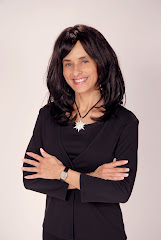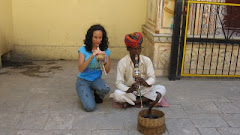
Vietnam in one year jumped from 20th to 13th place among colleges sending the most students to U.S. colleges and universities. The top 20 in the 2007-08 academic year:
By Mary Beth Marklein, USA TODAY
HO CHI MINH CITY, Vietnam — Besides the brochures, application forms and give-away trinkets spread on the table in front of her, Claudia Colnar keeps a U.S. map handy. Inevitably, "Where's Wyoming?" is the first question she'll get when recruiting Vietnamese students to her community college.
Her response goes beyond geography. Wyoming is home to American Indian tribes, national parks and snow, she says.
Colnar's trip last year, her first to Vietnam, yielded no enrollments. This week, she's trying again. "We'd be remiss if we didn't," she says.
At the New World Hotel, 700 students and their parents poured into a fancy ballroom to learn about 23 U.S. schools participating in last year's Asian recruitment tour organized by the American Association of Community Colleges.
Other countries may send more students to the USA, but enrollment of Vietnamese students in U.S. colleges and universities is growing fastest. It jumped 45%, to 8,769, in 2007-2008, the latest data available. The worldwide increase averaged 7%.
About 85% of visas for Vietnamese students are issued in Ho Chi Minh City; most of those — more than 5,000 — go to students who plan to start at a two-year college.
"The market for community colleges is on fire here," says Mark Ashwill, who until recently directed the Institute of International Education in Vietnam, which co-hosted the fair. Most students plan to earn a bachelor's degree, but community colleges are an attractive place to start. They tend to be more flexible about language requirements and don't require admissions test scores.
Meanwhile, demand for higher education far outstrips supply here. And rapidly growing incomes mean many urban families can afford the cost of a U.S. college education.
"I want her to have a better future," says Do Thi Kim Lien, a secretary at the fair on this afternoon with daughter Pham Ngoc My Linh, 20. Linh has studied English and is interested in studying hospitality management. "When I come back to Vietnam, I'll have a good job," she says.
International students contribute more than $15.5 billion in tuition and living expenses to the U.S. economy, through their expenditures on tuition and living expenses, making U.S higher education one of the country's largest service-sector exports.
Several recruiters here say foreign students also often inspire their classmates.
"These international students are so driven. They want to succeed," says Nithy Sevanthinathan, director of international programs for the Lone Star College System in Texas, where about 2,100 of 51,000 students, or 4%, are foreign; about 120 are Vietnamese. When U.S. students get to know them, he says, "Their own dreams become broader and greater."
Despite those benefits, international recruiting can be a slow and challenging process. The U.S. Consulate here has gained a reputation for having strict visa requirements. A 2005 study by Australia, for example, found that while Vietnamese students would prefer the USA, they are more likely to enroll in Australian colleges.
"Most of my friends interviewed to get a (U.S.) visa, but most of them failed," says Nguyen Duc Dung, 24, a former English teacher who is studying business administration in Ho Chi Minh City. His sister, Vo Thi Thanh Tu, 18, hoped to attend a community college in Washington state but was not granted a visa. Now, her brother says, she is studying in Australia.
Michael Michalak, U.S. ambassador to Vietnam, says he is committed to increasing Vietnamese student enrollments in U.S. colleges. But, he stresses, visa applicants must be able to demonstrate that they are "bona fide students," have been accepted at an institution, can pay for their education, and "have a plan for using that education when returning to Vietnam."
For community colleges, that means patience is key. Sevanthinathan took home contact information for 40 students last year, and three applied for admission. But as with Colnar, none of that interest translated into enrollments this fall. He's also back this year.
Judith Irwin, who organized the trip as director of international programs and services of the association, says it typically takes three to five years for a school to see the fruits of their work. "It takes time and follow-up. It's not an inexpensive endeavor."
article here: http://www.usatoday.com/news/education/2009-09-23-vietnam-college-fair_N.htm















.jpg)
.jpg)



